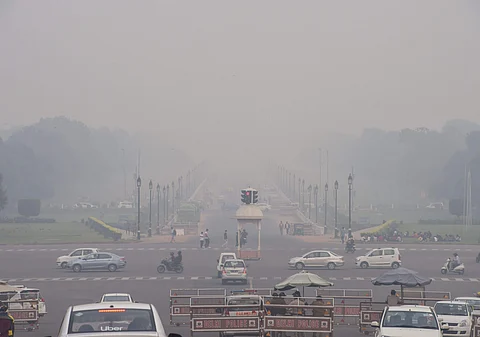

A study conducted by the Indian Institute of Technology (IIT), Delhi, found that the poor air quality in Delhi is majorly due to emissions released out of burning biomass, as compared to the fireworks during Diwali. Titled "Chemical speciation and source apportionment of ambient PM2.5 in New Delhi before, during and after the Diwali fireworks" and led by IIT Delhi researchers, the study elucidated the sources of pollution impacting the ambient quality of air in the capital before, during and after the festival.
The lead author of the study, Chirag Manchanda, stated, "The team found that biomass burning-related emissions rise steeply in the days following Diwali, with average levels almost rising twice compared to the pre-Diwali concentration." He added, "Also, the source apportionment results, pertaining to the organic PM2.5, indicate a significant rise in both primary and secondary organic pollutants in the days following Diwali, suggesting that the role of biomass burning-related emissions in the increase of primary organic emissions and, in turn, their aged products following the Diwali festival."
"We also found that the metal content in PM2.5 levels rose by 1,100 per cent and the fireworks alone accounted for 95 per cent of the metal PM2.5 during Diwali. However, the impact of the fireworks plummets within around 12 hours following the festival," he stated. Being published in the journal Atmospheric Pollution Research, the study has also presented source-apportionment results for highly time-resolved elemental and organic fractions of PM2.5 to address the challenge.
Associate Professor in the Department of Chemical Engineering, IIT Delhi, Vikram Singh, said, "Both stubble burning and increased heating requirements of the region in winter drive the biomass-burning activity." He added, "The study thus concluded that the biomass-burning emissions rather than the fireworks drive the poor air quality in Delhi during the days following Diwali." Further, he said, "The result of this study provides crucial insights into a topic of long-standing debate and concern between air quality experts and policymakers committed to alleviating the extreme air pollution events in the capital of Delhi following Diwali."
